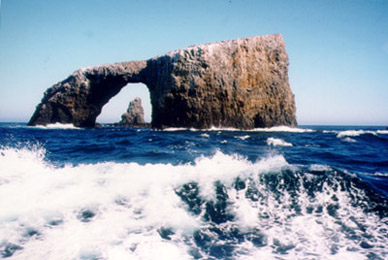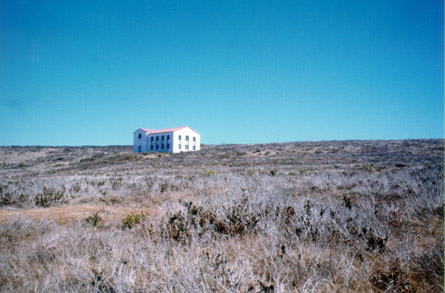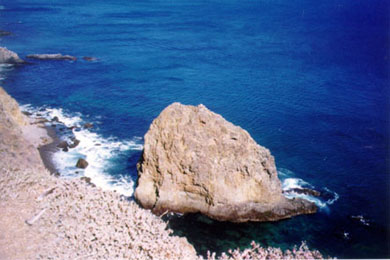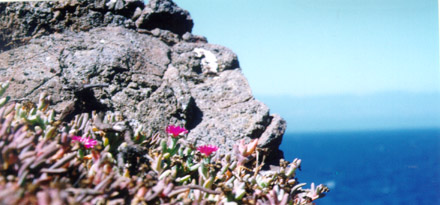A Day Trip by Boat


Five to ten million years ago, the Anacapa Islands, members of the Channel Islands, were formed when a crack in the ocean floor allowed lava to bubble out slowly. As the cooled lava grew in size, the ocean smoothed out the top of the forming islands (called terracing).
Today, the island has a flat top with steep cliffs on all sides. On one side of the island, an arch remains, and is used as a symbol for the island. The hole was formed from water crashing against the sides of the rock.

To get to the island, I had to take a boat out. There is a service that offers trips to each of the islands at different times on different days. Only one island is reachable for a half of a day, Anacapa, whose round trip boat ride is 3 hours when the water is not rough.
The boat ride out is rather fun, and you are able to see different types of sea life. We saw a blue whale, different types of birds, seals, and sea lions. Our ride was particularly rough, and several passengers got sea sick, so it is important to take Dramamine if you are susceptible to sea sickness. it is also important to bring a warm wind breaker, even in August.
Because of the rough waters, the boat was not on schedule. We left a half hour late, and were only able to spend 1 1/2 hours in the island instead of 2. The boat service has no control over the weather or water conditions. It is possible to get to the island only to find that it is too rough to get off of the boat. This is rare, and one of the boat staff assured me that in that case, we would do a scenic tour around the island so the trip would still be worth it.
The prominent feature on the island is the light house. On foggy days, you can hear its horn, but may not be able to see it from the other side of the tiny island. There is a trail from the visitors center that leads up to the lighthouse.
In 1853, the Winfield Scott crashed into the island on a foggy night. Her remains lie in the water off the edge of the island. It was not until 1912, and many other wrecks, that a light was brought to the island.
Water must be imported from the main land and stored in two 55,000 gallon tanks. A building resembling a church was built around the redwood tanks to protect them fro the elements.
Water is used by the park staff, who live on the island in private quarters. The ranger who lives there greets the boat upon arrival. He remains in the area for questions, but allows us to wander the paths with an interpretive booklet for a solitary and quiet tour.


The island is made of basalt, which is lose and crumbly, so it is important to stay on the trails. There have been accidents on the island where people have gone beyond the markers, so I chose to stay on safe ground. Even while standing back from the edge, I could see wonderful views of the other Anacapa Islands. I wished that I had planned ahead an brought a kayak to paddle around the pillars of rock jutting from the sea.
On the far edge of the island, there is the best view of the other Anacapa Islands. Unfortunately, you are not able to hike out to the other islands in this picture.
I shared this vista with millions of seagulls. There where while ones (mature) and brown ones (3 years or younger). The young ones kept begging the parents for food, but the parents shrugged them away so they could learn to get food on their own.


On the side of the island furthest from the California shore lies a beach where seals and sea lions play and sun themselves.
The returning boat ride takes you around to see the animals, but they are about as close to the boat as they are from the cliffs above where I took this picture.
A detail of the animals on the beach is shown below.


The iceplant was introduced to the island in the 1930's by the resident Coast Guard. It has crowded out most of the native plans and grasses on the island. Introduced plants make up 20% of the number of species on the island, covering about 25% of the ground. The flowers are most abundant in the spring. By August, there are only a few blossoms remaining.
The grasses offered shelter for the birds' eggs, but now the eggs are left on top of the carpet of ice plants. Currently, there is a study going on to see how the birds do in the remaining grasses versus the area with the iceplants.

